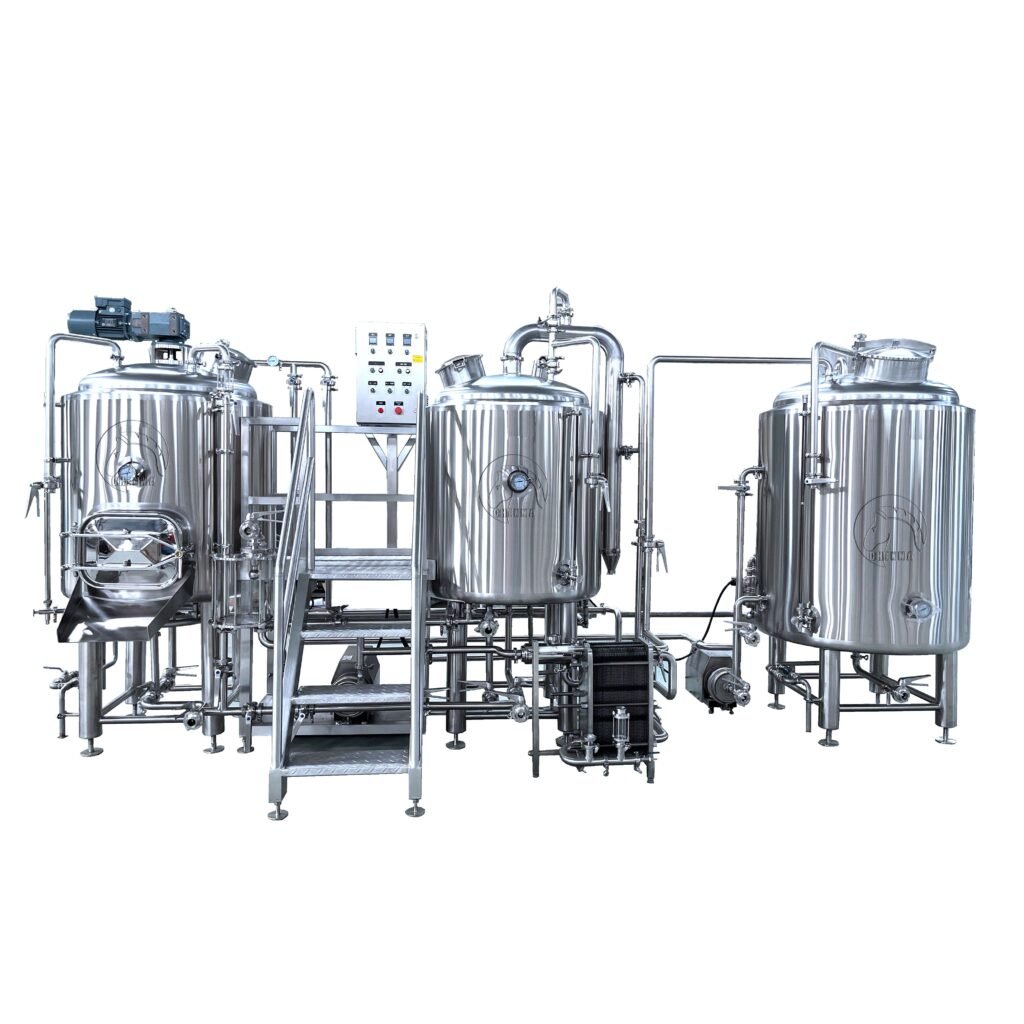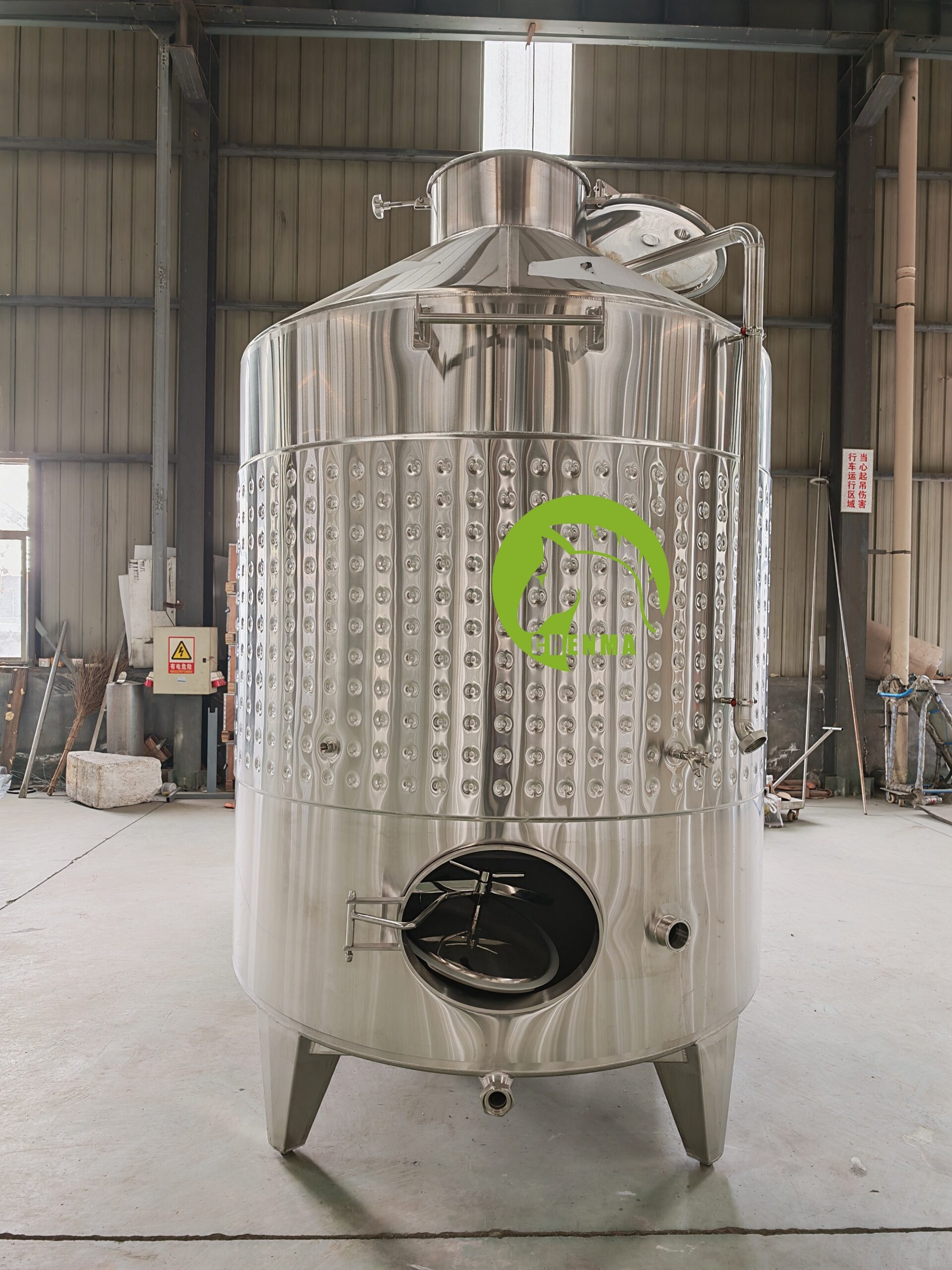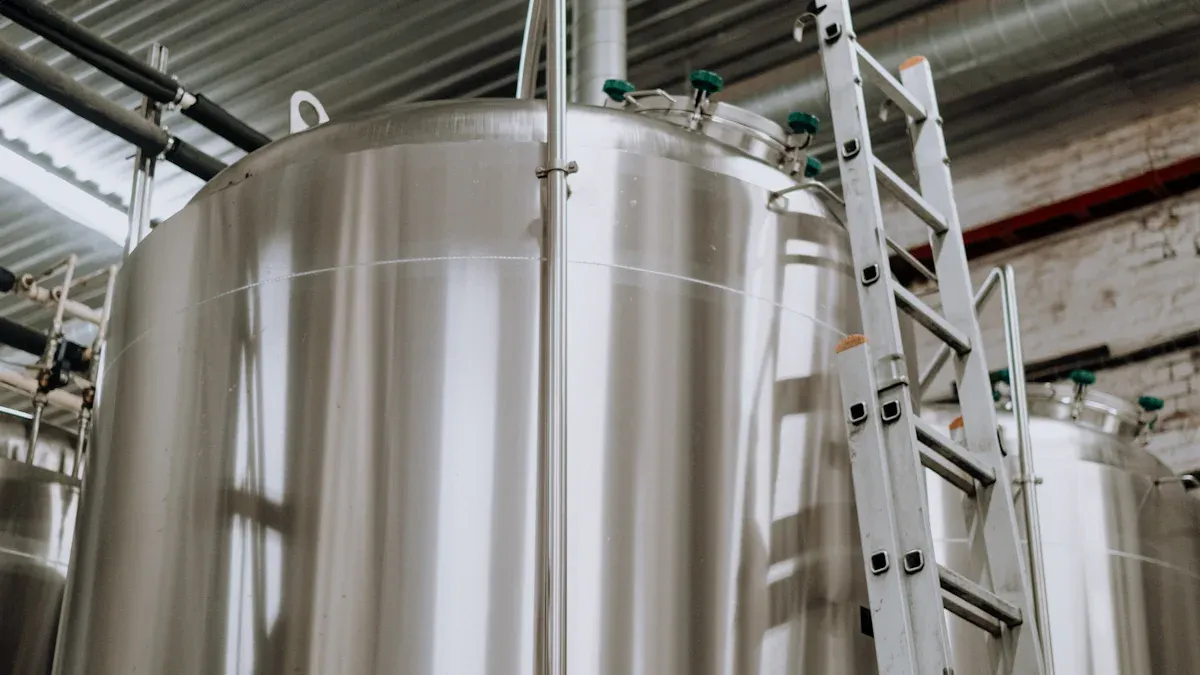
Understanding the fundamental differences between lager and draught beer is crucial for both brewers and beer enthusiasts. While lager refers to a specific brewing method using bottom-fermenting yeast at cold temperatures, draught beer describes a serving method where beer is dispensed from kegs or casks rather than bottles or cans. This comprehensive guide will explore these differences, brewing processes, equipment requirements, and practical considerations for brewery operations.
Table of Contents
- Fundamental Differences Between Lager and Draught Beer
- The Lager Brewing Process and Requirements
- Draught Beer Systems and Serving Methods
- Essential Fermentation Equipment for Both Styles
- Quality Control and Storage Considerations
- Brewery Setup Requirements and Recommendations
- Common Challenges and Troubleshooting
- Cost Analysis and Production Efficiency
Fundamental Differences Between Lager and Draught Beer
The primary distinction between lager and draught beer lies in their fundamental definitions. Lager refers to a brewing method using bottom-fermenting yeast at cold temperatures (5-10°C), while draught beer describes a serving method where beer is dispensed from pressurized containers rather than bottles or cans.
Lager Beer Characteristics
Lager beer is characterized by its clean, crisp flavor profile achieved through cold fermentation and extended maturation periods. The bottom-fermenting yeast (Saccharomyces pastorianus) works slowly at low temperatures, producing fewer esters and phenols compared to ale yeasts. This results in a beer with:
- Clean, smooth taste profile
- Light to medium body
- Lower alcohol content (typically 3.5-5.5% ABV)
- Extended fermentation period (4-8 weeks)
- Cold storage requirements during production
Draught Beer Characteristics
Draught beer is brewed traditionally and ferments naturally in a cask, consumed unpasteurized directly from a cask or keg system. Key characteristics include:
- Fresh, unfiltered taste when properly maintained
- Higher carbonation levels
- Limited shelf life compared to bottled beer
- Requires specialized dispensing equipment
- Can be either lager or ale style
| Aspect | Lager Beer | Draught Beer |
|---|---|---|
| Definition | Brewing method using bottom-fermenting yeast | Serving method from kegs/casks |
| Fermentation Temperature | 5-10°C (41-50°F) | Varies based on beer style |
| Fermentation Time | 4-8 weeks | Depends on beer style |
| Serving Method | Bottles, cans, or draught | Exclusively from kegs/casks |
| Shelf Life | 6-12 months (packaged) | 2-4 weeks (kegged) |
The Lager Brewing Process and Requirements

Lager production requires precise temperature control and extended fermentation periods. The process involves several critical stages that demand specialized equipment and careful monitoring.
Primary Fermentation Phase
During primary fermentation, lager yeast works optimally at temperatures between 5-10°C. This cold fermentation process typically takes 2-3 weeks, significantly longer than ale fermentation. The low temperature activity produces fewer byproducts, resulting in the characteristic clean flavor profile.
For optimal lager fermentation, consider investing in high-quality beer fermentation tanks that provide precise temperature control and adequate capacity for extended fermentation periods.
Secondary Fermentation and Lagering
The lagering phase is crucial for developing the beer’s final character. During this 4-6 week period at near-freezing temperatures (0-4°C), the beer undergoes:
- Protein precipitation and clarification
- Flavor maturation and smoothing
- Residual yeast settling
- Final gravity stabilization
Temperature Control Equipment
Successful lager production requires reliable cooling systems. Modern stainless steel fermentation tanks with integrated cooling jackets provide the precise temperature control necessary for consistent lager production.
Draught Beer Systems and Serving Methods
Draught beer systems require careful consideration of dispensing equipment, gas systems, and line cleaning procedures to maintain beer quality from keg to glass.
Keg Systems and Pressurization
Modern draught systems typically use stainless steel kegs with CO2 or mixed gas pressurization. The serving pressure must be carefully balanced to maintain proper carbonation while preventing over-foaming. Standard serving pressures range from 10-14 PSI, depending on the beer style and line length.
Line Cleaning and Maintenance
Draught lines require regular cleaning to prevent bacterial contamination and off-flavors. A proper cleaning schedule includes:
- Weekly alkaline cleaning
- Bi-weekly acid cleaning
- Monthly line inspection
- Quarterly system sanitization
Professional breweries often implement CIP (Clean-in-Place) systems to automate and ensure thorough cleaning of all beer contact surfaces.
Essential Fermentation Equipment for Both Styles
Whether producing lagers or preparing beer for draught service, selecting appropriate fermentation equipment is crucial for consistent quality and production efficiency.
Fermentation Tank Selection
Modern breweries typically choose between several tank configurations:
- Conical Fermenters: Ideal for both lager and ale production, allowing easy yeast harvesting and trub removal
- Cylindrical Tanks: Cost-effective option for larger volume production
- Variable Capacity Tanks: Useful for varying batch sizes and preventing oxidation
For comprehensive guidance on selecting the right equipment, explore our detailed fermentation tank selection guide, which covers key considerations for both beer and wine production.
Cooling and Temperature Control
Lager production demands precise temperature control throughout fermentation and conditioning. Essential cooling equipment includes:
- Glycol chilling systems
- Insulated fermentation tanks
- Temperature monitoring systems
- Backup cooling redundancy
| Equipment Type | Lager Requirements | Draught Considerations |
|---|---|---|
| Fermentation Tanks | Precise temperature control, extended capacity | Standard fermentation, focus on final conditioning |
| Cooling System | Essential for cold fermentation | Required for serving temperature maintenance |
| Pressure Control | Moderate pressure for carbonation | Critical for proper dispensing |
| Cleaning Systems | Standard brewery CIP | Extended line cleaning requirements |
Quality Control and Storage Considerations
Both lager and draught beer production require strict quality control measures, though each presents unique challenges and requirements.
Lager Quality Control
Lager quality control focuses on temperature management, fermentation monitoring, and extended conditioning periods. Key monitoring points include:
- Fermentation temperature consistency (±0.5°C)
- Specific gravity progression tracking
- Yeast viability and health monitoring
- Conditioning temperature and duration
Draught Beer Quality Maintenance
Draught beer quality depends heavily on proper handling from brewery to point of service. Critical factors include:
- Cold chain maintenance (0-4°C throughout distribution)
- Proper CO2 pressure management
- Line cleaning schedule adherence
- Keg rotation and inventory management
Storage and Packaging Considerations
Proper storage is essential for maintaining beer quality. Lagers typically require:
- Cold storage throughout production and distribution
- Protection from light exposure
- Minimal temperature fluctuations
- Proper packaging materials (UV-protective bottles or cans)
For breweries looking to optimize their storage solutions, industrial-grade stainless steel tanks provide the durability and temperature control necessary for consistent beer quality.
Brewery Setup Requirements and Recommendations
Establishing a brewery capable of producing both lagers and draught beer requires careful planning and equipment selection to ensure operational efficiency and product quality.
Space and Layout Considerations
Brewery layout should accommodate the longer production cycles associated with lager brewing while providing efficient workflow for draught beer preparation and packaging. Key considerations include:
- Adequate space for extended fermentation tank capacity
- Separate cold storage areas for lagering
- Efficient keg washing and filling stations
- Quality control laboratory space
- Loading dock access for distribution
Equipment Scalability
Many successful breweries start with versatile equipment that can produce both lager and ale styles. Consider investing in multi-purpose mixing tanks that can handle various brewing processes while maintaining the flexibility to expand production capacity.
Utility Requirements
Lager production places higher demands on cooling utilities compared to ale brewing. Essential utility considerations include:
- Increased refrigeration capacity (30-40% higher than ale-only operations)
- Backup power systems for critical cooling equipment
- Adequate water supply for cooling and cleaning
- CO2 supply and storage for carbonation and pressurization
Common Challenges and Troubleshooting
Both lager and draught beer production present unique challenges that require specific troubleshooting approaches and preventive measures.
Lager-Specific Issues
Slow or Stuck Fermentation: Cold temperatures can cause yeast to become sluggish or stop fermenting entirely. Solutions include:
- Gradually increasing temperature by 2-3°C
- Adding fresh, healthy yeast
- Ensuring adequate yeast nutrition
- Checking for temperature control system malfunctions
Off-Flavors from Extended Conditioning: Long lagering periods can sometimes lead to autolysis or other off-flavors:
- Monitor conditioning temperatures closely
- Rack beer off yeast sediment when necessary
- Limit lagering period to 6-8 weeks maximum
- Maintain proper CO2 levels to prevent oxidation
Draught System Problems
Over-Foaming: Excessive foam can result from various system issues:
- Check serving pressure (should be 10-14 PSI for most beers)
- Inspect for kinked or damaged beer lines
- Verify proper temperature throughout system
- Clean and sanitize all beer contact surfaces
Off-Flavors in Draught Beer: Poor line maintenance is the primary cause:
- Implement weekly alkaline cleaning schedule
- Use appropriate cleaning chemicals for beer lines
- Check for bacterial contamination
- Replace worn or damaged components
| Problem | Lager Issues | Draught Issues | Solution |
|---|---|---|---|
| Temperature Control | Stuck fermentation | Warm beer, over-foaming | Upgrade cooling systems, improve insulation |
| Contamination | Extended exposure risk | Line contamination | Strict sanitation protocols, regular cleaning |
| Pressure Issues | Carbonation problems | Poor dispensing quality | Calibrate pressure systems, check regulators |
| Flavor Defects | Autolysis, oxidation | Cleaning chemical residue | Monitor conditioning, improve rinse procedures |
Cost Analysis and Production Efficiency
Understanding the economic implications of lager versus draught beer production helps breweries make informed decisions about equipment investment and production planning.
Lager Production Costs
Lager production typically involves higher operational costs due to:
- Energy Costs: Extended refrigeration requirements increase utility expenses by 25-40%
- Time Investment: Longer production cycles tie up fermentation capacity
- Equipment Depreciation: Specialized cooling equipment requires significant capital investment
- Quality Control: Extended monitoring and testing throughout conditioning period
Draught System Investment
Draught beer systems require substantial upfront investment but offer several economic advantages:
- Higher Margins: Draught beer typically commands premium pricing
- Reduced Packaging Costs: Eliminate bottles, cans, and labels
- Customer Loyalty: Fresh draught beer encourages repeat business
- Inventory Turnover: Faster inventory turnover compared to packaged beer
Return on Investment Considerations
When evaluating equipment purchases, consider both immediate costs and long-term benefits. High-quality brewing systems may require higher initial investment but provide better reliability and product consistency over time.
Operational Efficiency Tips
Maximize production efficiency through:
- Batch scheduling to optimize fermentation tank utilization
- Preventive maintenance programs to minimize downtime
- Staff training on proper cleaning and sanitation procedures
- Energy-efficient cooling systems with heat recovery
- Automated monitoring systems to reduce labor costs
Professional Brewery Equipment Solutions
At Shandong Chenma Machinery Co., Ltd., we specialize in providing comprehensive brewing equipment solutions for both lager and draught beer production. Our state-of-the-art manufacturing facility produces high-quality stainless steel fermentation tanks, cooling systems, and complete brewery setups tailored to your specific requirements.
Our experienced engineering team can help you design an efficient brewery layout that accommodates both lager production requirements and draught serving systems. We provide complete turnkey solutions including equipment manufacturing, installation, commissioning, and technical training.
Contact Our Brewing Experts
Location: Pingyuan County Economic Development Zone, Dezhou City, Shandong Province, China
WhatsApp: +86 180 6342 1809
Email: admin@sdchenma.com
Our team of over 200 professionals works in our 20,000 m² production facility, equipped with state-of-the-art machinery capable of producing even the most technically demanding designs. We hold ISO9001-2005 quality system certification, ISO14001-2015 environmental management system certification, OHSAS18001-2007 occupational health management system certification, and EU CE certification.
Conclusion
Understanding the differences between lager and draught beer is essential for successful brewery operations. While lager refers to a specific brewing method requiring cold fermentation and extended conditioning, draught beer describes a serving method that can apply to any beer style. Both present unique challenges and opportunities, requiring appropriate equipment, procedures, and quality control measures.
Success in producing either style depends on investing in proper equipment, maintaining strict quality control standards, and understanding the specific requirements of each production method. Whether you’re planning a new brewery or expanding existing operations, careful consideration of these factors will help ensure consistent, high-quality beer production that meets customer expectations and regulatory requirements.



